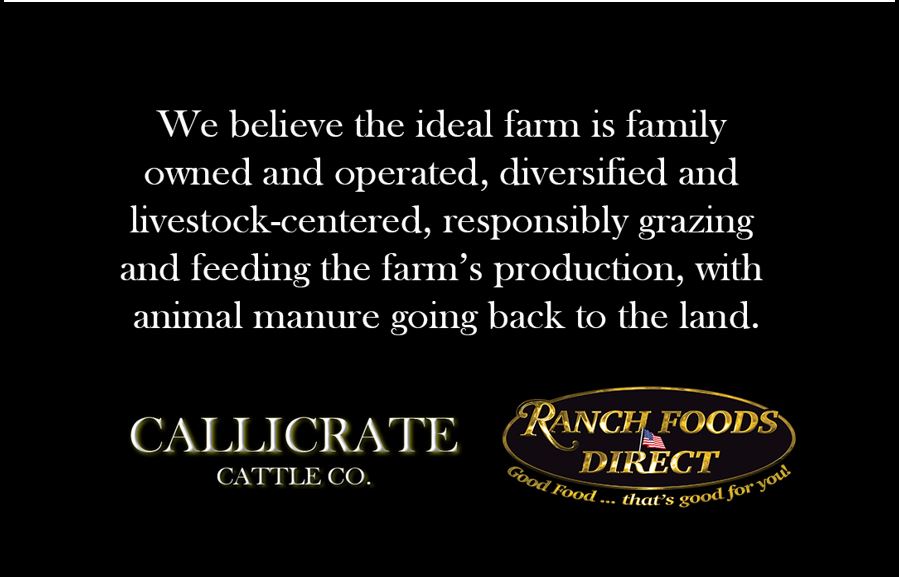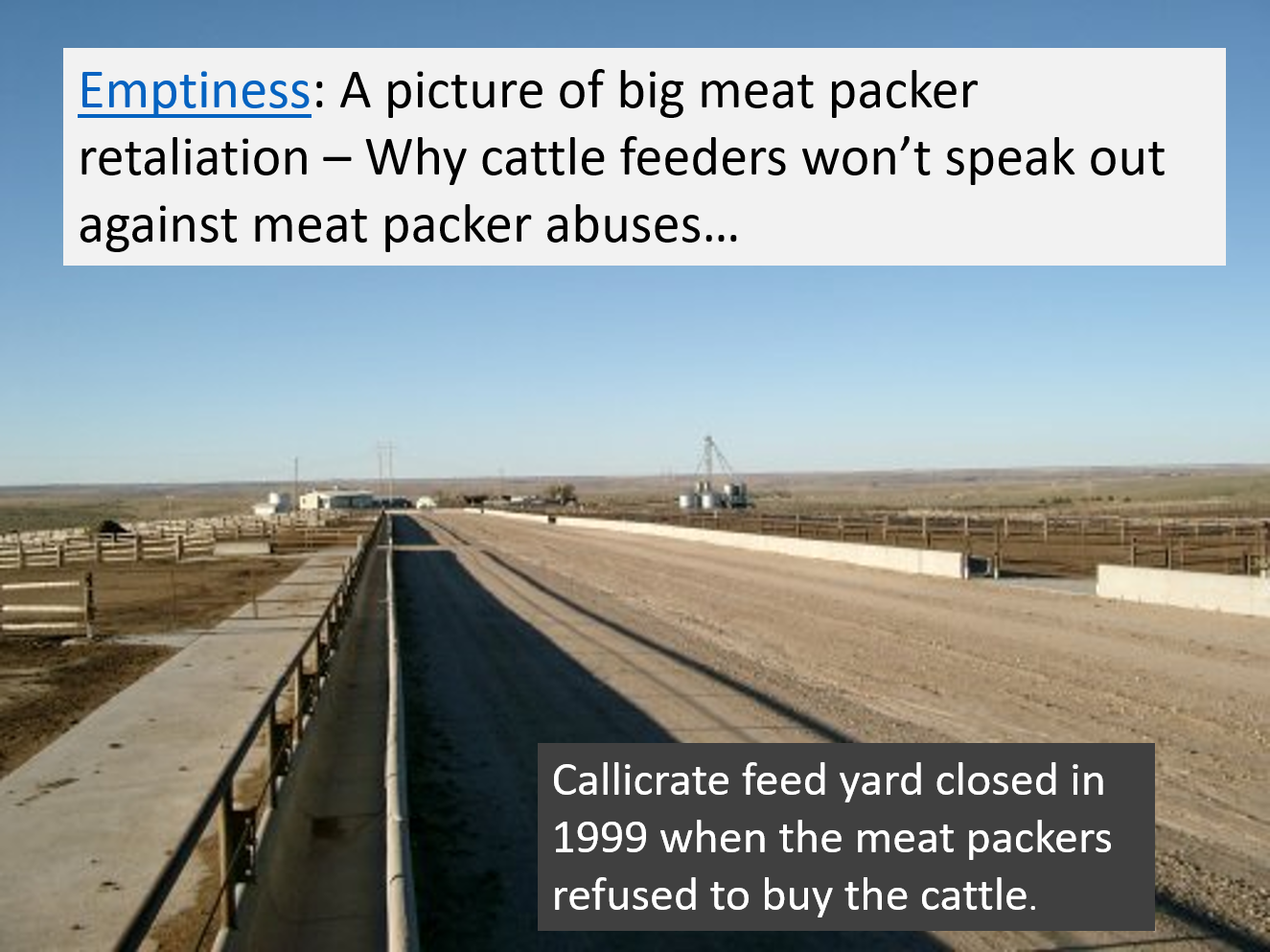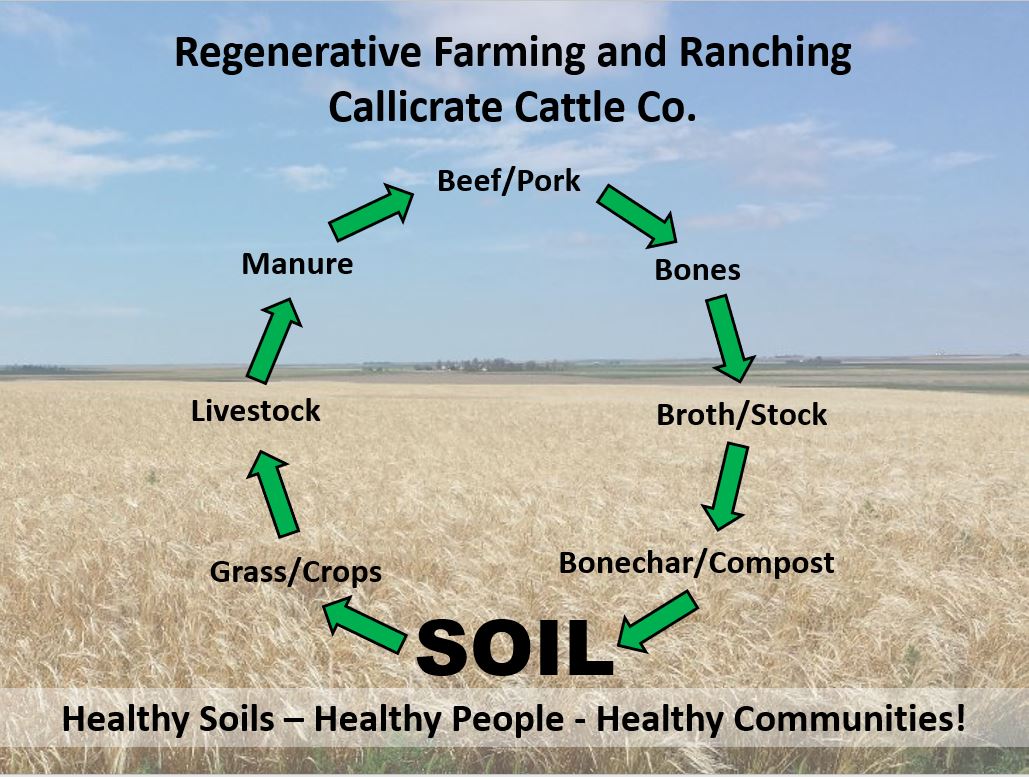How can an industrial livestock operation transition from feeding corporations to feeding people?
Downsize, diversify, and sell direct.
Just east of the Colorado-Kansas border in the Republican River Valley watershed, annual precipitation is around 17 inches per year. Winters can be cold and snowy, and summers hot and very dry. Farm and grasslands make up the landscape in somewhat equal parts. Cattle harvest the grass, consume nearly all of the hay and other forages, and much of the grain, providing a dependable year-around supply of high quality meat to consumers.
In December of 1998, Callicrate Cattle Co. was shut out of the market by the meatpacker cartel, which was forcing smaller independent feedlots like ours into non-negotiated packer-aligned marketing arrangements at the expense of traditional family farm agriculture. Fifteen employees soon lost their jobs and many local farmers and cattle producers lost an important market for feed, calves, and feeder cattle.
After much worry and considerable thought, and following years of failed attempts at litigation and legislation to restore open and competitive markets, Callicrate Cattle Co. decided to seek an alternative – build a separate and more direct pathway to the consumer. A path that would avoid market predators – specifically, the big meatpacking, retail, and food service cartel. The well-organized, and government-enabled multinational monopoly had long been mining valuable resources from the land and rural communities, including precious water, soil, and equity, while impoverishing our most essential citizens: farmers, ranchers, and the workers who support these critical agricultural operations. We hoped to build a more accountable, equitable and humane connection to the consumer by selling meat instead of livestock. In June of 2000, we shipped our first cattle to G&C Packing in Colorado Springs for processing, and Ranch Foods Direct was born.
Today, twenty-one years later, we are still in business providing a better market for ourselves and many other producers of healthy foods in the region. Our program focuses on healthy food, regenerative practices, product quality and eating satisfaction.
Cattle graze across our pastures and cover crops, and are finished on high quality local forages and grains, using our pre-existing feedlot pens. By avoiding the growing competitive pressures to use growth-promoting drugs, we improved animal welfare, health, and meat quality. Pigs are raised in open pens with plenty of room to roam. A modern and efficient on-site slaughter facility saves thousands of miles of high-stress transport, and provides processing for other producers seeking to sell direct. Carcasses and select parts such as organ meats, along with pastured eggs, are shipped to our food-hub and meat processing facility in the urban center of Colorado Springs. Highly skilled butchers cut the properly aged carcasses directly into primals and retail cuts, eliminating the less safe and inefficient step of “boxing,” before sending them to our two retail stores and several restaurant and wholesale accounts.
We believe our model is exemplary of a dependable, sustainable, safe, and resilient food system that serves the whole community, making the lives of producers, workers, and consumers better, while conserving resources, healing the environment, building soil heath, and improving animal welfare and meat quality.
The following short video shows Callicrate Cattle Co. today after transitioning from a 12,000 head capacity industrial style feedyard to a regenerative, soil building, multi-species operation producing year around, high quality, and healthy food for the region:















